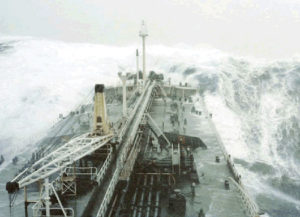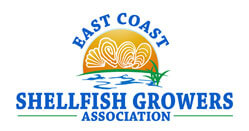Rookie Mistakes for New Growers to Avoid
If you have been around this business for a while, you’ve probably watched some of the newcomers make the same mistakes you did when you were getting started. ECSGA Executive Director Bob Rheault decided he would try to think of as many of these common pitfalls as he could to help new growers avoid making the same costly blunders. Through the years he has continued to add to the list.
If you don't have 28 minutes to watch a video of the narrated power point presentation (above), check out the Tips for Success below.
Tips For Success
1) Don’t think you know it all. Volunteer to work with more experienced growers. The money you save from the tips you will learn will more than pay for your time.
2) Don’t get greedy. Don’t buy/plant more seed than you have gear to grow it in or time to maintain. Overcrowding and poor husbandry leads to poor growth, bad meat condition and can potentially lead to diseases and overwinter mortality. Overstocking bags and failing to stay on top of fouling is the number one most common failure.
3) Learn the difference between sieve size and seed size. 3mm seed will not be retained in a 3mm mesh bag. Order seed that is retained on a mesh larger than your smallest mesh or ask the hatchery what size screens they sort their seed on. They may ship the wrong size. When you get your seed, test it in a way where you can recover any seed that slips through the mesh.
4) If you put oyster seed in a bag with openings that are too close to the seed size, many will grow into the mesh and you will have to kill them to separate them from the bag. My rule of thumb… mesh size of the sieve should be ~1.5 X the mesh size of the bag you are going into.
5) If you use a brine dip tank to control mud blisters or boring sponge, ensure that it doesn’t warm up in the sun. A 10-minute dip in hot brine will kill more than just fouling organisms.
6) Start small. Don’t plant millions until you know it works with a few thousand. You can learn just as much by killing a few thousand as you can by killing millions.
7) Order seed early and give deposits to 2-3 different hatcheries in February. Order more than you need. Chances are one will have a problem and not be able to fill your order. One will probably underperform and you will toss these seed out after the first season. Seed is not your biggest cost of operations – labor is, but if you don’t have seed you won’t have sales. You can always sell surplus seed if you don’t have adequate space to grow it out.
8) Learn to walk, before you run. Start with large seed. It costs more, but you will have a shorter time to market and you will avoid some of the pitfalls of working with small seed. If you loose a cup of 1mm seed you have lost 250,000 seed. If you lose a cup of ½” seed you won’t notice the difference.
 9) Mother Nature is your partner, not your friend. If you think she likes you, guess again. Large waves carry incredible forces. Even heavy cages in deep water can be shredded. Big waves will also mobilize vast amounts of sand that will settle out in your bottom bags and cages, smothering everything inside while making the bags incredibly heavy. Design your anchors and lines for the worst case. It is better than trying to clean up after a storm has strewn your crop around the bay.
9) Mother Nature is your partner, not your friend. If you think she likes you, guess again. Large waves carry incredible forces. Even heavy cages in deep water can be shredded. Big waves will also mobilize vast amounts of sand that will settle out in your bottom bags and cages, smothering everything inside while making the bags incredibly heavy. Design your anchors and lines for the worst case. It is better than trying to clean up after a storm has strewn your crop around the bay.
10) Starving oysters don’t grow. Current flow is critical. Current carries new food to the oysters in the bag after they have eaten everything in the water inside the bag. 90% of the flow goes around a clean ½” mesh bag. Hardly any water will go through a bag that is fouled or covered with seaweed/eelgrass/kelp or anything else that blocks the flow.
11) I’ll say it again; Flow is really important. Finer mesh bags have more friction. Maximize flow by sieving animals often and moving them to the next larger size mesh as soon as possible (but don’t violate rule 5). Water does not pass through a 1mm mesh bag without a pump. More Flow – More Grow – More Dough
12) Once more for emphasis; Flow and food concentration will determine your stocking densities, growth rates, meat quality, etc. If you have rich waters you can get away with less current and vice versa. The best sites have both rich food and good flow.
13) Try everything at first. Lots of gear types, lots of sites, lots of failures, means lots of learning. Putting all your eggs in one basket is probably a bad idea. If you can diversify into multiple species or sites you will diminish your risk of losing everything.
14) Listen to your animals. Shuck some every week. If the animals are thin and watery or not growing they might be overstocked (or maybe diseased or perhaps they just spawned). Try holding a few “pampered pets” in a clean, well-maintained, low-density bag and check it weekly. If these animals are suffering then you have a big problem (disease or poor food quality). If your pets are fat and happy but the rest of the crop is thin, then you probably have a stocking density or husbandry issue. Do lots of small experiments. Stock bags at different levels to see what works on your site. Different sized seed have different optimal stocking densities and what works at one site or on one side of your lease may not work elsewhere. Take lots of notes.
15) Be a good neighbor. You are working in the public commons, under the public’s eye. If you make a big mess or break the laws it reflects badly on the entire industry and they will hate you and make your life miserable. Utilize the ECSGA’s Best Management Practices manual and make a farm plan that reflects your operation.
16) Don’t quit your day job right away. Profit is further away than you think. Plan to lose the whole crop once a decade. Shit happens; storms, disease, oil spills….
17) When you scale up you will never hit the spreadsheet projections you made based on a small-scale experiment. Your mortality rate will be greater, your growth slower, your price lower and your costs will be greater than you predicted.
18) You make money by selling shellfish, not by growing shellfish. Spend time figuring out how you will market your product well before you have shellfish to sell. Your marketing plan may be the most important chapter of your business plan. Don’t try to compete locally on price unless you have the lowest cost of production, otherwise you will have the lowest profit margin. Differentiate yourself from the competition by quality, consistency or service. (See marketing tips at ECSGA.org)
19) Get to know your neighbors before you start your farm. Explain your plans, provide detailed information on your gear and daily work schedule, ask for their opinions. Provide "peace offerings" (e.g. oysters at Thanksgiving, etc.) occasionally.
20) Get to know your local Cooperative Extension/Sea Grant personnel. Sign-up for newsletters, etc. Participate in public meetings, training sessions, and workshops.
21) Get to know your regulators (and your regulations), especially your state shellfish sanitation regulators. Talk to them. Some are actually pleasant people who can help you. You don’t want to be at war with these people unless it is really necessary.
22) Sign up for NAP insurance (non-insured crop disaster assistance) through your local Farm Service Agency office. It is not great, but it is very cheap. Don’t wait til after you lose the crop like I did.
23) Better yet, sign up for ELAP (Emergency Assistance for Livestock, Honey Bees and Farm Raised Fish Program) - it's free! Read about it in our newsletter or check it out on the USDA website. Then run, don't walk, to your local Farm Service agent about registering your crop acreage by September 30. This is fantastic coverage that will pay out 70-90% of the value of your loss to a storm or freeze. Don’t wait until after the hurricane hits.
24) Take lots of notes (you will need them if you need to make an insurance claim) and keep your permits and notes well organized. Waterproof notebooks are great. (Available at Forestry Supply in a range of sizes)
25) Use stainless fasteners. The money saved using galvanized fasteners is insignificant compared to the cost of fixing whatever breaks when they rust out.
26) Perseverance is a critical trait: be stubborn and grow a thick skin. Before you get a lease opponents will question your character, your ability your integrity. Get over it. Just because you are right don’t assume people will agree with you or that you will be able to get a permit.
27) Cut costs – proven the easiest way to improve your profit margin. Increasing your price only increases your profit by the fractional increase, and you run the risk of cutting your sales volume and losing customers. Every dollar you can shave from your expenses goes right to your profits.
28) Never drop your price. When sales are soft you might be tempted to drop your price to move inventories. If sales are soft, weak demand or poor quality are likely to blame and a lower price won’t make much difference. When demand recovers your customers will complain when you try to raise prices and it can take years to get back to where you started.
29) Join your industry associations (state, local and national).
